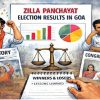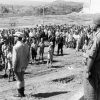Goa is abuzz with excitement as vintage bike and car owners, users, collectors and fans are decking […]
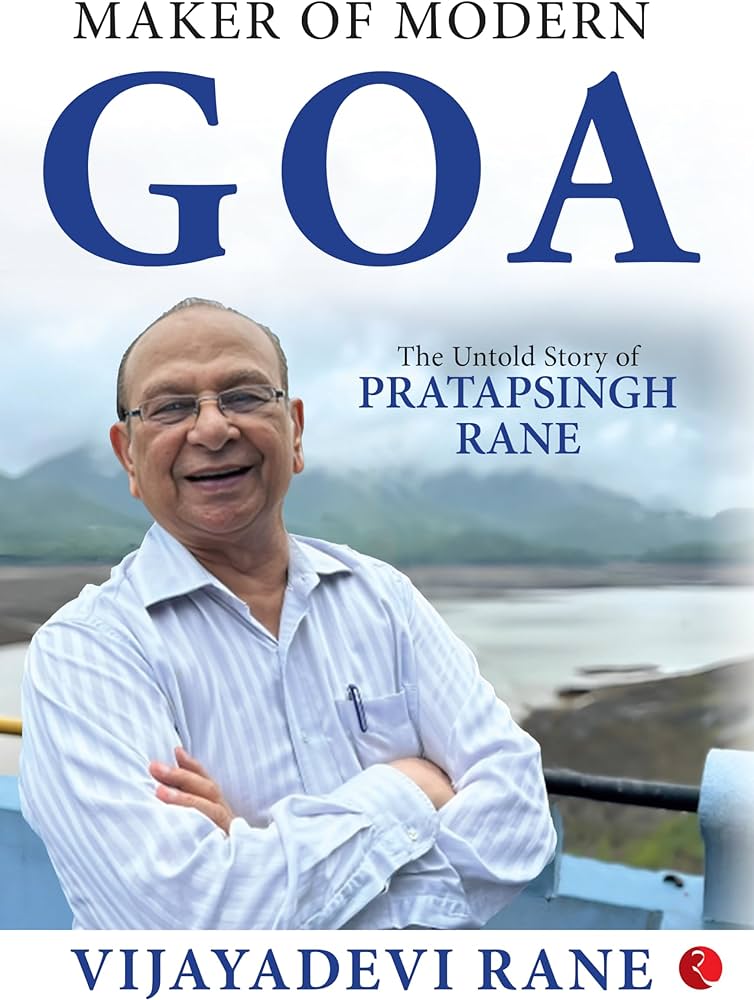
Pratapsingh Rane: MAKER OF MODERN GOA
BOOK REVIEW, Feb 04- Feb 10 2023, Feb 17- Feb 23 2024 February 16, 2024By Tara Narayan
WE don’t know if more and more politicians are writing books to educate readers about their life and times and what contributed to their success as politicians, statesmen, husbands, fathers, grandfathers, friends, et el. Politicians of the older generation are generally speaking better raconteurs and have more interesting stories to tell of their life and times (presumably in comparison to the life and times of their sons and daughters and even grandchildren now in politics, seeing how dynastic politics have become in India or Bharatdesh, whichever you wish).
Political lives make for interesting reading even if they’re bound to be biased and err on the side of being positive, with few unsavoury negatives! If you live or do not live in Goa but are interested in understanding Goa better, it is imperative you read long-time chief minister of Goa, Pratapsingh Rane’s book — `Maker of Modern Goa: The Untold Story of Pratapsingh Rane’ by Vijayadevi Rane (published by Rupa Publications, hardcover, Rs500).
The book was launched recently with great fanfare in Goa and I dare say he is the first chief minister of Goa who thought it fit to put down his thoughts on the making of “modern Goa.” Pratapsingh Rane’s claim to fame is that he was the longest serving chief minister of Goa, winning 11 consecutive elections and never losing in 50 years as an MLA – some kind of a record given Goa’s volatile political profile with few thinking twice before toppling a government by hook or by crook. We suppose it is easier to do that given the fact that Goa’s the smallest state and comparatively more educated, more wealthy. It’s the common perception that Rane’s long innings ushered in stability and good governance and Goa prospered.
Most of the memoirs in the book undoubtedly come from his spouse author Vijayadevi who traces the life and times of what she sees as an unlikely politician (just quoting from the flap cover details of the book). Reportedly, Rane’s reign as chief minister is popularly perceived as the “golden age” of Goa’s development into a modern state with an infrastructure of all-weather roads, bridges, dams, schools, colleges and hospitals on a war footing (never mind that 450 years of erstwhile Portuguese colonial rule must have seen some development too albeit of a different kind per colonial needs).
The book’s Foreword is by son Vishwajit Pratapsingh Rane who confesses, “For me, his proud son, my father has been my political and personal role model, my leader, mentor and friend….” He compares his father to the protagonist Mohan in superstar Shah Rukh Khan’s Hindi film “Swades” (about an idealistic young man giving up his comfortable life in the United States to return to his home land India). He also observes his parents’ 55-year-old relationship as the “love story of Pratap and Vijaya, which has so admirably weathered life’s changing seasons.”
RANES OF SATTARI
GOA’S political history comes alive in this neatly written biography through the eyes of its most enduring and strict chief minister (if one is to believe it also Goa’s most feared chief minister). We learn that the Ranes descended from the Rajputs of Rajasthan and have dominated Sattari since the 16th century as landlords or bhatkar of the region. They are Kshatriya-Maratha, warrior clans with roots across the Deccan, “We are a hardy, robust an aristocratic people, proud of our Maratha identity as legatees of the great Shivaji Maharaj. We are descendants of military commanders, strongly attached to our unique traditions and way so living.” Goa’s Portuguese time history sees a chapter when the “famous Rane revolts” in the late 18th century lasted until 1912. Reportedly, the Portuguese time taxes were too high!
Here is history as seen through the eyes of local clans in the Goa of old and it is quite fascinating how native politics got pitted against the colonial politics of the times. The Rane legacy of connections in high places is recounted here in the nitty gritty and family members were naturally brought up with a sense of their importance and what role they should play in life’s callings. To quote Rane, “Life at home was full of people. Lots of children, lots of visitors, my father’s tenants, aunts and uncles…Sometimes performers, musicians and temple singers who hail from the Gomantak Maratha Samaj would also come.” Responsibility naturally comes hand in hand with the blessings of good fortune and a liberal upbringing.
REFRESHER COURSE
ANYONE familiar with Goa’s pre- and post-Liberation history will recognise names, events and what happened when, why and how – the book is a delightful refresher course in Goa’s undoubtedly unique history. It’s very easily read, not didactic at all, even if a tad fulsome in latter chapters. It offers insight into the life and times of one of Goa’s most feudal, privileged, educated as also secular, cosmopolitan and secular political families – the family of Raoji Satroji Rane family of Sattari, landowners and bhatkar of the area.
The putting together of this narrative couldn’t have been easy and one must really thank Vijayadevi for facilitating it. It must have taken a lot of effort, patience and undoubtedly caring for a man who built on the colonial foundation of modern Goa with prudence and exemplary vision. `Maker of Modern Goa: The Untold Story of Pratapsingh Rane’ makes for some very useful reading, if you cherish Goa’s undoubtedly unique history as it evolved from times immemorial to today’s dramatic changeovers.
Goa’s longest serving chief minister has done good in putting it all down for future reference. Take a bow Vijaydevi for this valuable biography of Pratapsingh Rane, albeit with help from many including author and journalist Sagarika Ghose and other familiar and unfamiliar names, they’re all listed in Acknowledgements at the end of the book.
Excerpts from `Maker of Modern Goa, The Untold Story of Pratapsingh Rane’ by Vijayadevi Rane…
Stepping Into Public Life 1969-1977
…After 1975, the personality clash between Mrs Kakodkar and Pratapsingh took a turn for the worse. As the politics of nepotism, intrigue and jealousy took hold in Delhi, the same kind of politics were mirrored in Goa. On 25 June 1975, PM Indira Gandhi imposed the Emergency across India. It was a slightly selfish move on Indira Gandhi’s part,’ says Pratapsingh. She was about to lose her lose her government after the Allahabad High Court judgement of 12 June 1975, which unseated her and barred her from contesting elections for six years. Indira was a child of Independence, the daughter of a staunch democrat and was herself educated abroad. In spite of all this, she imposed the Emergency to stay in power.’ There was hardly any impact of the Emergency in Goa.We watched what was happening in Delhi, but Goa by and large remained liberal. Yes, the people who overdid things were put behind bars and we would get all the price lists that were to be charged for grain. But we did not have the forced sterilization and coercive practices of the Sanjay Gandhi variety here,’ he says.
In fact, Pratapsingh and I organized our own initiatives on family welfare. We did believe in the importance of the need for more awareness, not only on population control but on family management and well-being. I took the lead in organizing family welfare camps across Goa. We brought in the eminent gynaecologist Dr MR Narvekar from Bombay to lead teams of doctors. We took care to ensure that there was no coercion or compulsion whatsoever. Instead doctors were tasked to give women advice not just on birth control but also on infertility, hygiene, welfare of new-borns and advice on family nutrition. Our camps were not family planning’ camps butfamily welfare’ camps.
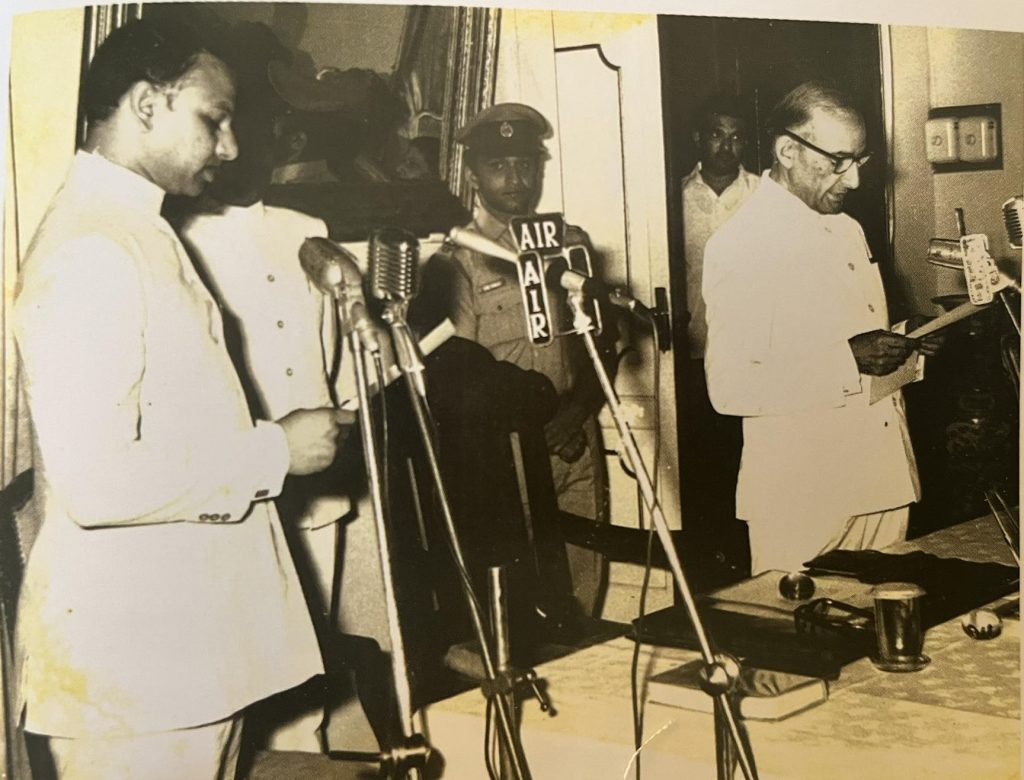
There was an overwhelming response to these welfare camps,’ Pratapsingh recalls.Women from all religions – Hindus, Muslims and Catholics – attended these camps. We were both keen on these awareness drives. This is because when forced to bear multiple children, ultimately, it’s the women who suffer, particularly if husbands cannot support them.’
But however hard he worked, Pratapsingh could not protect himself from the short-sighted politics of envy and nepotism, which began in Kakadkar’s government. There were many allegations of favouritism. Kakodkar’s husband Gurudatt Kakodkar, a United Kingdom (UK)-trained chartered accountant, was accused of obtaining transport and cement licenses. His interference in government and party matters also caused deep resentment among old MGP members who were loyalists of Bhausaheb Bandodkar. In a particularly embarrassing incident for the CM, a Marathi publication Sameer, edited by Gurudatt Kakodkar, was help up in the assembly by the Opposition’s Ananta Narcina (A.N.) Naik or Babu’ Naik, revealing a lewd centre spread, much to the wrath of the Opposition. Kakodkar was accused of bestowing government advertising to her husband’s journal, Bandodkar had been an all -embracing, consensual figure, but Kakodkar ran a highly centralized government and reportedly relied too heavily on the advice of her husband. The unpopularity of Gurudatt Kakodkar took a toll on Shashikala’s authority. Pratapsingh is never critical about anyone and rarely has a harsh word for any political colleague. Yet on Kakodkar, he is unable to restrain himself, clearly still deeply hurt by her treatment of him:there was an arrogance to Shashikala that was completely absent in Bandodkar. Although educated, she was a little narrow-minded and cantankerous. These traits did not inspire confidence. It was unfortunate that the person who opposed me was my own CM, only because after the elections of 1972, her father had made me a cabinet minister first while she had remained a state minister.’
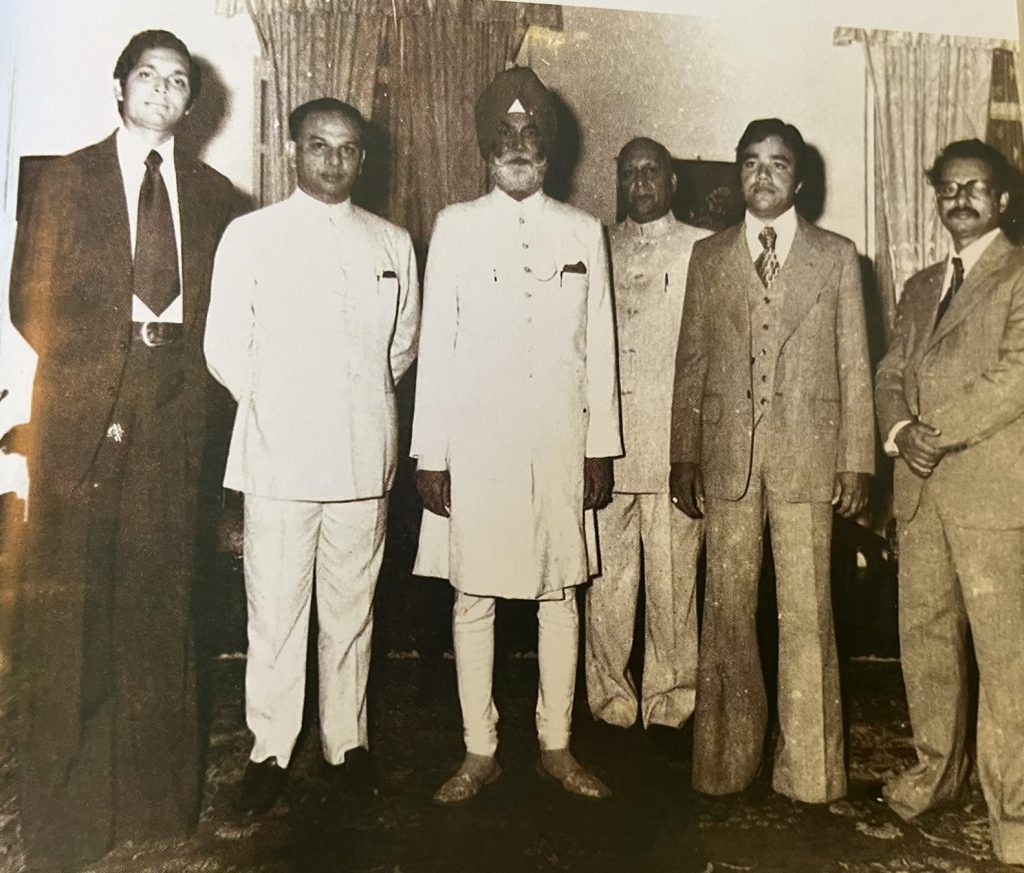
Chief Minister: 1980-1990
30 May 1987: the day when the red earth of Goa throbbed with the footfalls of a new generation. A new Goan was born, a citizen of India’s newest state. Utt Goykara!’ (Wake up, Goans!!) exhorted OHeraldo in a front-page editorial that morning.The future beckons. The 21st century beckons. You new destiny as the newest and brightest state of the Indian Union beckons.
It was a momentous day. A day of Goa’s own tryst with destiny. So many had struggled for this day, had been imprisoned, had fought, lost their lives, campaigned, rallied and marched . Now seemed as if the spirit of Tristao De Braganca Cunha, who had dareamed of freedom orGoa, and the spirit of the great Rane hero Dipaji Rane who, in the nineteenth century, had foght tenaciously for his rights were present. The spirits of the satyagrahis of the 1940s, of the poets, writers, artists and intellectuals who, through the decades, had kept alive the quest of self-rule for Goa – it seemed as if they were all here too. The freedom fighters who had kept on reminding Goans not to rest until they achieved freedom, those who kept the lamp of liberty burning during the colonial period, they now could rest easy that this day had dawned. Today, on 30 May 1987, it was as if the spirits of all those valiant men and women who had put their shoulders to the wheel for Goa’s long struggle for self-rule hovered over this historic moment.
The name of the Goa Assembly changed. The Goa, Daman and Diu Legislative Assembly was now named, initially, the Provisional’ was used until the first session of the new state assembly was constituted. After a long association, Daman and Diu were delinked from Goa and became a separate UT.Although we are now politically separate, ’ Pratapsingh told newspapers, Daman and Diu will remain in our hearts.’ ….At the Campal grounds Rajiv made another encouraging speech,I congratulate every Goan on achieving statehood. It has been a long standing demand and it has been achieved through hard work. Your agenda as a state must be to social reform and to cultural continuity. With statehood comes privilege but perhaps more than that comes responsibility. Your primary responsibility is to peace, to harmony among all the communities and the identification of every Goan in the mainstream of development. At the same time you must increase your contribution to nation building.’ The PM spoke both in English and Hindi, aiming to reach all part of India.
His words were forward looking and spoken in a spirit of outreach, as if he had brought wishes from the whole country. It was as if all of India was saying Welcome, Goa; welcome, India’s twenty-fifth state.’ …As the finale to the ceremony, Rajiv leant forward and pushed a button, and slowly the pink curtain in front of the mural next to the stage drew back to reveal a huge illuminated map of Goa. The giant map was titled1State of Goa’ with all 11 talukas named and marked. As the curtain drew back, the crowd gasped in wonder: there she was, Goa, that green paradise, our paradise, where harmony was a way of life where the people were now getting what we had always longed for – our own identity, our own language and our own state. Above the map, the Goa state emblem was also on display. The emblem as the Vrisksha Deep or traditional Goan lamp surrounded by symbolic coconut leaves, to reflect Goa’s scenic loveliness, and crowned by a Sanskrit subhashita (auspicious saying) conveying: Let everyone enjoy prosperity. Let none suffer any pain.’ Addressing the crowd in Konkani, Pratapsinghs said:Goa is our beautiful state. I should be a model state for the entire country.’
The Mandovi , flowing past the Campal grounds, glittered with evening lights as if lit with a new iridescence. Goa, a Portuguese colony for 450 years, than a UT for 26 years, now at last an independent, self-governing state in the Union of India.”
Thoughts Looking Back, Looking Forward
What is the best form of government, according to him? Government must be a government of laws. The people – or elected representatives – make the law and the government implements it. It must be a government that follows laws, upholds laws and implements laws in a fair manner for the betterment of the people. There may be certain flaws in the laws that have been made, and these can be corrected. On labour, industrial development, the government must proceed according to the laws laid down. There may be some state laws and some federal laws. But it is essential that the law prevails. If there is fear of the law, there will always be ethics in administration. Ethics is distinct from moral policing. The government should not attempt to be a moral policeman, such as imposing prohibition or trying to over-regulate dress or recreation or other individual choices. He says:Today we have plentiful supply of liquor shops in Goa, but have you ever seen Goan drunk on the road? Abundant supply creates rational behaviour.’
Pratpsingh says: I remember once Morarji Desai came to Goa and made comments to the effect that Goans are all drunkards. Immediately, one of our MLAs Roque Santana Fernandes, who had been a great freedom fighter for Goa and later became a Congress MLA, disagreed with Morarji vociferously and said, “You will never be able to impose prohibition in “Goa..” Pratapsingh believes prohibition just cannot work in Goa. Such a policy would hit the small man who, in the cashew season, opens hundreds of small distilleries and makes a good living. Similarly with the hippies who run around in scanty clothing on Goa’s beaches.It’s best to ignore them. In my time, nobody bothered about them. Some of them I remember were young Americans who had run away from the US to escape being enlisted in the Vietnam War!’
How did Pratapsingh approach his tasks as an administrator and what is the secret of his success? First,’ he says,you have to familiarize yourself with your portfolio and do the work that you have been allotted. Towards this end, you have to build trust with bureaucrats, be helpful to them and try not to get caught in red tape. You need to prepare yourself with all the facts, so bureaucrats now that when they come and meet you, they should not talk in the air but give you specific facts. Making proper appointments is key. Give your officers a certain time that they can meet you and stick to timings.’ In fact, while he was CM, Pratapsingh was known to be a stickler for appointments as well as dealing with officers fairly without any unnecessary pomp and show. He built a sense of shared values with his officers as his ministries became akin to well-run firms with a good corporate culture. He had no time for intrigue or ego games or any of that. All he cared about is that the work got done,’ says Shailaja Chandra.One of the crucial ways of managing an administration is to lead by the power of example. If you are always on time, your officers will be too.’
Even his political colleagues acknowledge his administrative skills. Pratapsingh Rane was someone who worked with progressive development at all times and implemented many of the resolutions passed in the assembly from roads and hospitals,’ Luizinho Faleiro says.On development sites, he would come personally in his construction helmet with all his officers and actually get the work done. He may initially have become CM as a consensus candidate, but he proved his mettle.’
Pratapsingh believes that for effective governance work, a good educational background is essential because you must be able to read a wide range of subjects and come to your own conclusions. The weaker sections of society will always come to you for help and you have to make time for them. If you ‘re not a minister and an MLA, you need to study what the people are lacking and approach the relevant minister to inform him or her on whatever is needed in your constituency. Not all politicians are ad people,’ he says.You have to constantly build trust with the people and many are able to do just that.’
When agitations take place, the administrator must try to ascertain why people are agitating and whether the demands are genuine or simply being whipped up by vested interests. During the Konkani-language agitation in 1986, Pratapsingh says that he ceaselessly tried t find a solution and even tried to reach out to the agitators. In the end, a solution was found according to one of his formulae for resolving conflicts: nobody should win and nobody should lose. In trying to achieve reconciliation, he is guided by the words, Let the best not become the enemy of the good.’ We may not achieve perfection, but we can achieve something widely acceptable. During public concerns on the Konkan Railway, I appealed to the people’s good sense. I said, “Here is a railway line to Bombay by which you will be able to send your children for education, for employment and for medical care. You will have a means of transportation at your doorstep.” We have to communicate as well as we can and take people into confidence. We have to reassure people that we want to maintain their particular cultural traditions, and way of life and not jeopardize them in any way. We should explain to them why we are supporting a particular development project.’ The most achievable realistic goal has to be focussed on, not some impossible, utopian vision.
Pratapsingh warns that agitations and protests are bound to crop up against governments. You have to be calm and not lose your shirt. You have to establish a process of give and take, and somewhere impress upon the agitators your point of view. After a while, things settle.’ When the Anjunem Dam was being built, many voluntarily came forward to surrender their land. The Anjunem Dam rehabilitation process has been widely seen as setting the standard n how to build trust and rehabilitate people. He was able to win the trust of all those affected by the project that he would do right by them and ensue they were properly looked after. He believes strongly that whatever the issue is, people must never be left with a sense of injustice or having been wronged. If governments abide by the law, then it follows that the government won’t violate the law or the Indian Constitution.Above all, you have to be just. And you have to be seen to be just.’
If a protest movement is strong, the state must back down, and even recognize the leadership potential of protest leaders and draw them into the ambit of democracy. In 1983, serious protests erupted in Panaji and Sanquelim over an engineering college to be set up by the Vodithala Education Society of Andhra Pradesh. The admission structure of the engineering college was perceived to be highly discriminatory against local Goans, as only 10 per cent seats were reserved for Goans and the rest of the seats were to be open to all Indians with a high fee structure. The perception was created that admissions were going to be made on the basis of payments or capitation fee and not merit.
Students held meetings and morchas in protest. Vijay Kumar Verekar took a leading role in these agitations. Pratapsingh, never one to take any decisions that were unpopular among people, quickly cancelled the project. Yet, at the same time, he was struck by the leadership potential of Verekar and suggested he contest elections from Pale constituency. Although Verekar’s candidature never did materialize, it showed how alive Pratapsingh was to the public mood and to those who succeeded in giving voice to public sentiments. This is how democracy is constantly replenished and given new energy.



